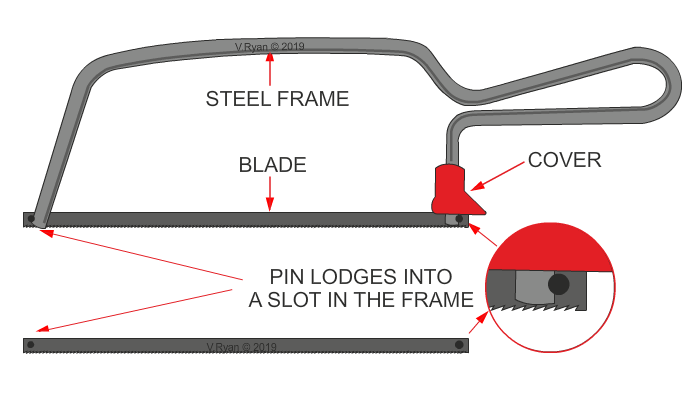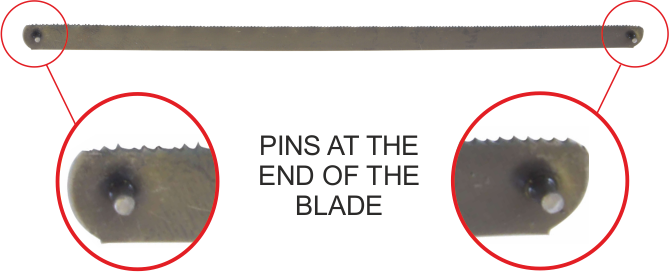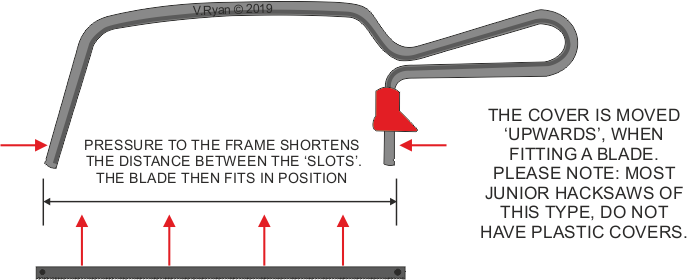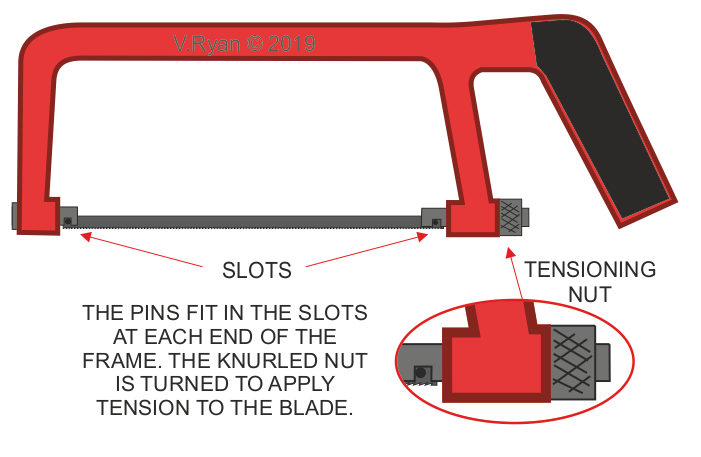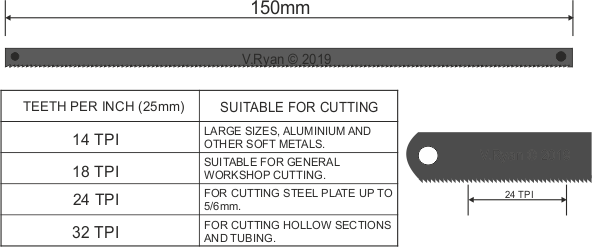The Junior hacksaw is a small scale version of a full size hacksaw. Two hands are required to use the full size hacksaw, whilst one hand is needed for the junior hacksaw. They are available in a range of designs and two are seen here.
The junior hacksaw is used to cut and shape metals, tube and some plastics. Where thicker and more robust materials are to be cut, a full size hacksaw is used.
The blades tend to be ‘fine’, potentially giving a precise cut and fit the junior hacksaw frame, with the aid of ‘pins’, at each end. The pins lodge firmly into ‘slots’, in the frame of the saw.
EXAMPLE ONE: To fit the blade, pressure is applied to the frame, shortening the distance between the ‘slots’ and allowing the blade to fit in place. When pressure is released, the frame flexes back to its original shape, tensioning the blade.

